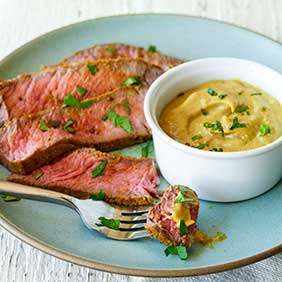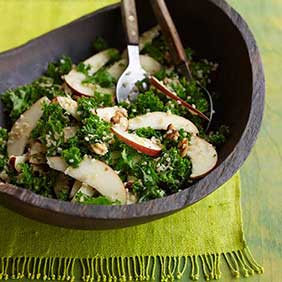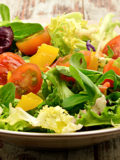 Did you make your New Year’s resolutions yet? Chances are if you are like many Americans, you usually make them, but don’t necessarily keep them. Statistics show some 45 percent of Americans make resolutions but only 8 percent actually achieve their resolution.
Did you make your New Year’s resolutions yet? Chances are if you are like many Americans, you usually make them, but don’t necessarily keep them. Statistics show some 45 percent of Americans make resolutions but only 8 percent actually achieve their resolution.
Top resolutions
The top resolutions? “Lose weight,” of course, is number one. “Get organized,” “spend less, save more” are next in line. That’s according to statistics gathered by University of Scranton Journal of Clinical Psychology.
If losing weight is on your resolution list, you might be thinking about what’s the fastest way to do it. Do I starve myself for two weeks? Do I try one of the latest crazy cleanses like the colon, liver, smoothie, juice or taco cleanse? What if I just eat soup?
These crazy ideas may work temporarily but will be unhealthy in the long run and may even make you gain back even more weight than when you started. Instead, take a look at some of the scientifically-backed diets that really do work and won’t make you sick.
Which diet to choose?
Designed to take the mystery out of which diet to choose, the “2016 Best Diets” report by U.S. News & World Report, is a good starting point. Starting in 2011, U.S. News put together a panel of health experts including nutritionists and physicians specializing in diabetes, heart health and weight loss. They scored each diet for short and long-term weight loss, ease of compliance, safety and nutrition. They have now issued six editions including two the first year.
The diets were ranked in nine categories, including diabetes and heart disease prevention and control as well as how easy they were to follow and the likelihood of weight loss.
The winner is…
DASH diet
The panel named DASH the “Best Overall Diet” for the sixth year in a row.
While you might think “DASH diet” gets its name from the 40-yard dash or “dash” to the finish, DASH actually stands for Dietary Approaches to Stop Hypertension. The concept of the DASH diet began in 1997 when the National Heart, Lung and Blood Institute (NHLBI), a part of the National Institutes of Health, published the results of a study on the relationship between diet and blood pressure. The study was named the DASH trial. Over the years, it was discovered that participants who followed the DASH diet and reduced the amount of dietary sodium they consumed, their blood pressure dropped.
Although the original purpose of the diet was to help prevent and control hypertension, the diet has gained in popularity for being a well-rounded diet for many people.
The DASH diet guidelines include fruits, vegetables, whole grains and low-fat dairy foods. It includes meat, fish, poultry, nuts, and beans. It suggests limiting foods that are high in saturated fat, such as fatty meats, full-fat dairy products and tropical oils such as coconut, palm kernel, and palm oils as well as sugar-sweetened beverages and sweets.
Author Marla Heller, MS, RD, has written a number of DASH Diet cookbooks, including The DASH Diet Younger You: Shed 20 Years—and Pounds—in Just 10 Weeks, The DASH Diet Action Plan: Proven to Lower Blood Pressure and Cholesterol without Medication, The Everyday DASH Diet Cookbook: Recipes to Speed Weight Loss, Lower Blood Pressure, and Prevent Diabetes, and The DASH Diet Weight Loss Solution: 2 Weeks to Drop Pounds, Boost Metabolism, and Get Healthy. (All published by Grand Central Life & Style)
Heller describes the DASH diet this way: “The study organizers wanted to take the best elements of vegetarian diets, which were known to be associated with lower blood pressure, and design a plan that would be flexible enough to appeal to the vast majority of Americans, who are dedicated meat eaters. They developed what they believed was the healthiest omnivore diet plan.”
Based on these recommendations, here is a sample table offered by the NHLBI with examples of daily and weekly servings that meet DASH eating plan targets for a 2,000-calorie-a-day diet.
Daily and Weekly DASH Eating Plan Goals for a 2,000-Calorie-a-Day Diet
Food Group, Daily Servings
Grains: 6–8
Meats, poultry, and fish: 6 or less
Vegetables: 4–5
Fruit: 4–5
Low-fat or fat-free dairy products: 2–3
Fats and oils: 2–3
Sodium: 2,300 mg*
Weekly Servings
Nuts, seeds, dry beans, and peas: 4–5
Sweets: 5 or less
*1,500 milligrams (mg) sodium lowers blood pressure even further than 2,300 mg sodium daily.
Heller notes that red meat can still be part of your menu choice with this diet.
“Red meat can play a role in a healthy diet,” Heller said. “It is just a matter of choosing lean cuts and exercising portion control. Many people grill steaks and chops, a cooking method that does not call for added fat, and then top them with a fatty sauce. I often prefer to cook the meat in a nonstick skillet to create flavorful pan juices that can be used to make a terrific pan sauce. Augment the meat with lots of vegetables, and you will have a meal in a skillet that needs very little to round it out.”
Here are two sample recipes for the DASH diet from author Marla Heller.
 Curry-Rubbed Sirloin with Peanut Dipping Sauce
Curry-Rubbed Sirloin with Peanut Dipping Sauce
Makes 8 servings
Sirloin
1 teaspoon curry powder
½ teaspoon ground ginger
½ teaspoon granulated garlic
½ teaspoon kosher salt
½ teaspoon freshly ground black pepper
Canola oil in a spray pump
1¾ pounds sirloin steak, about 1 inch thick, excess fat trimmed
Peanut Dipping Sauce
¼ cup smooth peanut butter
3 tablespoons brewed cold black tea
3 tablespoons light coconut milk
2 teaspoons peeled and minced fresh ginger
2 teaspoons reduced-sodium soy sauce
1½ teaspoons rice vinegar
2 teaspoons curry powder
1 clove garlic, crushed through a press
Chopped fresh cilantro or mint, for garnish
To prepare the sirloin: In a small bowl, mix the curry powder, ground ginger, granulated garlic, salt, and pepper. Spray the oil on both sides of the steak and season with the curry mixture. Let stand at room temperature while making the peanut sauce.
To make the Peanut Dipping Sauce: In a medium bowl, whisk together the peanut butter, tea, coconut milk, ginger, soy sauce, vinegar, curry, and garlic.
Position a broiler rack about 4 inches from the source of heat and preheat on high. Oil the broiler rack and add the steak. Broil, flipping the steak over after 3 minutes, until browned on both sides and the meat feels only slightly resilient when pressed in the center, about 6 minutes for medium-rare. Transfer to a carving board and let stand for 3 minutes.
Pour the peanut sauce into eight ramekins. Carve the steak across the grain into ½-inch-thick slices. Transfer to a platter and sprinkle with the cilantro. Serve hot, with the peanut sauce.
Nutritional Analysis
(1 4-ounce serving ) 236 calories, 28 g protein, 0 g carbohydrates, 12 g fat, 0 g fiber, 100 mg cholesterol, 191 mg sodium, 439 mg potassium. Food groups: 4 ounces meat. (1 3-ounce serving ) 189 calories, 23 g protein, 0 g carbohydrates, 10 g fat, 0 g fiber, 80 mg cholesterol, 153 mg sodium, 343 mg potassium. Food groups: 3 ounces meat. (1 serving, Peanut Dipping Sauce: 3 tablespoons) 198 calories, 4 g protein, 10 g carbohydrates, 9 g fat, 1 g fiber, 0 mg cholesterol, 159 mg sodium, 157 mg potassium. Food groups: 1 nut.
 Kale, Pear, and Bulgur Salad
Kale, Pear, and Bulgur Salad
Makes 4 servings
½ cup bulgur
1¾ cups boiling water
8 ounces curly kale
2 tablespoons fresh lemon juice
½ teaspoon kosher salt
2 ripe pears, such as Anjou or Comice, cored and thinly sliced
½ cup walnut pieces, toasted (see “Toasting Nuts,” below) and coarsely chopped
2 tablespoons extra-virgin olive oil
Freshly ground black
Pepper
Put the bulgur in a medium heatproof bowl and add the boiling water. Let stand until the bulgur is tender, about 30 minutes. Drain in a wire sieve. Press the excess liquid from the bulgur. Set aside.
Pull off and discard the thick stems from the kale. Taking a few pieces at a time, stack the kale and coarsely slice crosswise into ½-inch-thick strips. Transfer to a large bowl of cold water and agitate to loosen any grit. Lift the kale out of the water, leaving any dirt behind in the water. Dry the kale in a salad spinner or pat dry with paper towels.
Sprinkle the kale with the lemon juice and salt. Using your hands, rub the kale until softened, about 2 minutes. Fluff the bulgur with a fork and add to the kale with the pears and walnuts. Drizzle with the oil and toss. Season with the pepper. Serve at once or refrigerate for up to 2 hours.
Nutritional Analysis
(1 serving) 295 calories, 8 g protein, 34 g carbohydrates, 17 g fat, 8 g fiber, 0 mg cholesterol, 278 mg sodium, 516 mg potassium. Food groups: ¼ whole grain, 2 vegetables, 1 fruit, ½ nuts, 1 fat.
Recipes excerpted from the book, THE EVERYDAY DASH DIET COOKBOOK by Marla Heller, MS, RD. Copyright © 2013 by Marla Heller, MS, RD. Reprinted with permission of Grand Central Life & Style. All rights reserved. Photos: Sheri Giblin
To learn more about the DASH and other top diets, along with recipes for each, check back for more in the Healthy Aging® diet series on the website. To read more, subscribe to Healthy Aging® Magazine, the lifestyle magazine that is all about following your passion and what you can do rather than what you can’t.













